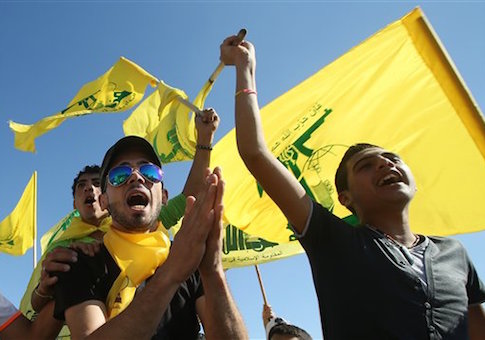JERUSALEM—Two of Israel’s principal adversaries, Hezbollah and Hamas, have experienced major setbacks in recent days, none of them connected to Israel.
Hezbollah, Iran’s powerful proxy force in Lebanon, has arrested 175 of its own fighters for refusing to continue battling rebel forces challenging the regime of Bashar al-Assad in Syria, according to opposition sources in Syria quoted by Israel Radio. The militia is said to have suffered 120 dead and 200 wounded in clashes with rebel forces inside Syria. This comes on top of more than 1,000 fatalities said by a senior Israeli official to have been suffered in the past two years in Syria by the Lebanese Shiite militia. Hezbollah has declined to reveal its casualty figures.
The pan-Arab newspaper Asharq al-Awsa has also reported significant loss of morale in Hezbollah ranks as seen by the reluctance of its members to confront rebel forces.
Meanwhile, a Hamas official in the Gaza Strip said today that 250 Hamas members on the West Bank have been taken into custody by the Palestinian Authority, which administers the area in conjunction with Israel. Most of those arrested by the PA had been tortured, the official said. (Hamas is the ruling authority in the Gaza Strip but its members in the West Bank live under joint PA and Israeli rule.) According to PA security officials, Hamas cells in the West Bank were planning a series of attacks on Israeli checkpoints, kidnappings of Israelis, and assassinations of PA security officials aimed at creating general turmoil. Hamas and the PA alternate between declarations of readiness for cooperation and outright enmity. In Gaza itself, Hamas rule is being challenged by extremist factions who profess loyalty to the Islamic State.
Palestinian media report that these factions are believed responsible for the detonation before dawn today of six jeeps belonging to the military wings of Hamas and Islamic Jihad. The incident has reportedly been followed by large scale arrests in Gaza of Jihadi ultras.
Two years ago, the Hezbollah leader Hassan Nasrallah announced that his organization was entering "a completely new phase" by sending fighters to another country—Syria—to assist the embattled Assad regime. By doing so, he said, Hezbollah was protecting its own interests. "It is our battle and we are up to it," he said. The decision was almost certainly made at the request of Iran, which is a patron both of Hezbollah and of the Assad regime and wanted the help of the former in propping up the latter.
The battle, however, has proven longer and bloodier than Nasrallah envisioned. Hezbollah units have been used as shock troops as the Syrian army, after more than four years of civil war, loses stamina and numbers. Hezbollah forces have been used in the Damascus area but mostly on the Syrian side of the border with Lebanon. Now, Hezbollah too is showing signs of erosion. Its fighters were defeated by rebel groups when they attempted a few months ago to take over an area adjacent to the Israeli-held Golan Heights
Iran’s supreme leader, Ayatollah Ali Khamenei, said last week in the wake of the nuclear agreement arrived at with Western powers, that Tehran’s assistance to its allies, including Syria and Hezbollah, will continue regardless of the agreement.
